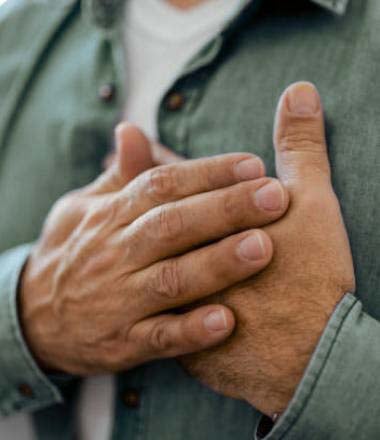
A Neurobiological Perspective
The Body Unwinds Through Safety:
The Body Unwinds Through Safety: A Neurobiological Perspective
If you’ve ever felt stuck on your healing journey, this might help you understand why. What if your body isn’t resisting healing, it’s just waiting to feel safe enough to begin? True healing begins when the body feels safe. This article explores how Polyvagal Theory helps us understand the nervous system’s role in regulation, and why safety, not force, is the foundation for sustainable change.
One thing I see again and again in my work is this: the body doesn’t heal just because we want it to. It heals when it feels safe.
This may sound simple, but it’s a foundational truth in somatic healing - and it’s supported by science. No amount of forcing, willing, or pushing will override a system that is still in protection mode. Until the nervous system receives the signal that it’s safe to relax, the body will hold its ground.
The Myth of Forcing Healing




THE SCIENCE BEHIND SAFETY
Enter: Polyvagal Theory. Developed by neuroscientist Dr. Stephen Porges, this theory helps us understand how the autonomic nervous system (which regulates automatic functions like heartbeat, digestion, and breathing) is constantly scanning our environment for cues of danger or safety.
This scanning process is called neuroception — a kind of subconscious surveillance system. It doesn’t rely on our thoughts or logic. It’s the body’s own intelligence, always asking: Am I safe?
When the body senses threat, it activates survival responses: fight, flight, freeze, or fawn. But when it perceives safety, it shifts into a different mode known as the ventral vagal state - the part of the parasympathetic nervous system that supports calm, connection, and healing.
WHAT HAPPENS WHEN WE FEEL SAFE?
When the body enters this regulated state:
Muscle tension begins to ease
Breathing slows and deepens
Heart rate variability (HRV) increases, indicating flexibility and resilience in the nervous system
Higher brain functions come online: emotional regulation, creative thinking, and self-awareness
In this state, the nervous system is no longer locked in defense. The body can start to unwind old patterns and integrate new ones. Trauma, stress, and stored tension begin to soften.
SAFETY CREATES THE CONDITIONS FOR HEALING
True healing isn’t about overriding discomfort. It’s not about pushing harder or distracting ourselves. It’s about creating the right conditions for the body to feel secure enough to let go.
This is why practices rooted in presence, gentle touch, attunement, coregulation and body awareness are so effective. They communicate safety on a biological level, inviting the nervous system into a state where healing is possible.
THE ROLE OF COREGULATION
We like to think of healing as an individual journey, and in many ways, it is. But we’re wired to connect. In fact, much of our capacity for regulation is shaped through relationship — a process known as coregulation.
Coregulation is what happens when another person’s calm, attuned presence signals to our body that we’re safe. It’s not about fixing, advising, or doing anything in particular. It’s about being with. When someone holds us in grounded presence (steady breath, soft tone, open posture) our system can start to settle. Not because we told it to, but because it felt the resonance of safety.
This matters, especially for people whose early experiences were shaped by dysregulation or emotional absence. When the nervous system didn’t learn safety through connection, it often needs to re-learn that experience in the presence of another. That’s where attuned therapeutic relationships — and even moments of genuine presence in daily life — can be profoundly reparative.
In my life, I’ve experienced how just being met — truly met — can shift our state. It’s often subtle. A softening in the breath. A longer exhale. Shoulders that lower by a few inches. These moments may seem small, but to a system that’s been on guard for years, they speak volumes.
A New Paradigm for Healing
Clinical and neurobiological research now supports what somatic practitioners have known intuitively: healing requires regulation. When the nervous system feels safe, it can re-pattern itself. It can shift out of survival and into a more integrated, responsive state.
So the next time you find yourself trying to "fix" or force something in your healing process, ask instead: What would help my system feel just a little safer right now? That question might just be the doorway to a beautiful unfolding.


An invitation to begin
You don’t need to push through or figure it all out. But if your system is asking for support, or if you're simply curious about how this work might feel, you're warmly invited to reach out.
I offer a free 15-minute consultation where we can chat, explore your questions, and see if this feels like the right fit for you.
Come as you are. We’ll begin from there.
Branching out
Curious minds, open hearts — these related pieces might speak to what’s unfolding for you.
Cymatics: Science vs Music: https://youtu.be/Q3oItpVa9fs?si=EWcGJUYm3C4uNHAf
Original cymatics experiments from 1960s by Swiss Scientist, Dr. Hands Jenny (4 part video series):
Part 1 - Bringing Matter to Life with Sound: https://www.youtube.com/watch?v=Pmsfuj1Rk9c
Part 2 - The Healing Nature of Sound: https://www.youtube.com/watch?v=57JpuMnWS1I
Part 3 - Application of Cymatic Therapy: https://www.youtube.com/watch?v=9kjJ3tiT9pU
Part 4 - Experiments In Animation With Sound & Vibration: https://www.youtube.com/watch?v=OfDQrhtXlA4
CymaticsLab – The Fascinating World of Cymatics: https://cymaticslab.com/blogs/news/the-fascinating-world-of-cymatics
References
Porges, S. W. (2011). The Polyvagal Theory: Neurophysiological Foundations of Emotions, Attachment, Communication, and Self-Regulation.
Koelsch, S. (2015). Music-evoked emotions: principles, brain correlates, and implications for therapy. Annals of the New York Academy of Sciences, 1337(1), 193–201.
Feldman, R. (2007). Parent–infant synchrony and the construction of shared timing; physiological precursors, developmental outcomes, and risk conditions. Journal of Child Psychology and Psychiatry, 48(3-4), 329–354.
SUBSCRIBE
Subscribe to be updated about latest news and blog posts and to follow what is happening in a magical land of Bali.
